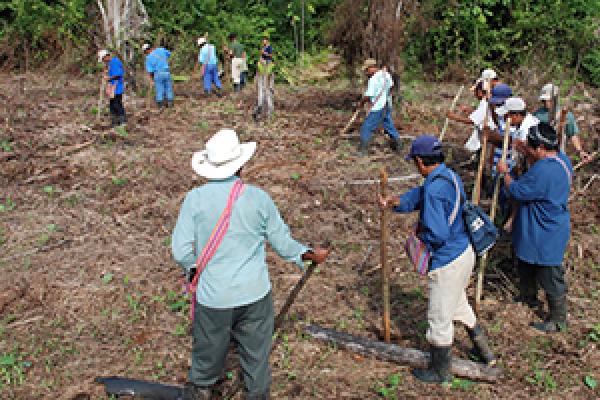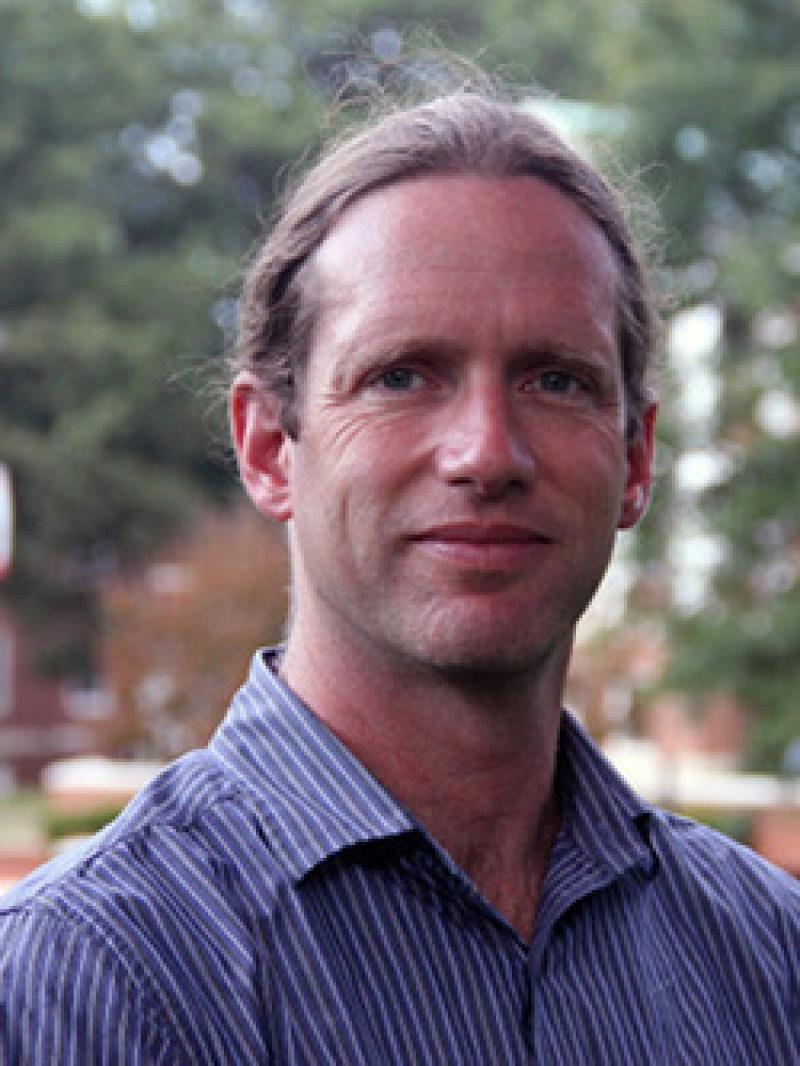Forest sustainability: How Maya social norms affect ecology

If you were a farmer in a forest-based village in Belize, you would likely ask a neighbor to help you go planting. But in doing that, you created an obligation that you will return the favor and help your neighbor at some point in the future.
Sean Downey, associate professor of anthropology, started working in two Q’eqchi’ Maya villages in southern Belize's Toledo District in 2005 to study connections between social and cultural norms and ecology. He has returned many times to study this social norm of communal labor exchange, where the community comes together to help neighbors do field work complete with a planting ceremony and symbolic meal.

The question at the core of Downey’s research is how social norms like those surrounding this event help regulate the use of a natural resource such as the forest, making sure it remains sustainable rather than using it at its maximum rate.
These Belize villages practice swidden agriculture, cultivating subsistence crops such as maize in cleared patches of forests — a method some refer to as “slash and burn.”
“Most people know the term ‘slash and burn’ from politics and life," Downey said. "It’s unfortunate that it has come to have these negative connotations because it’s the way many indigenous communities around the world produce food for themselves and have done so for thousands of years. Clearly, if it has been around for so long it must have some sustainable characteristics, and this question is at the heart of the debate over whether swidden is inherently destructive of forests or if can be used sustainably."
In 2016, Downey, a core faculty member of the Sustainability Institute at Ohio State, was awarded a National Science Foundation CAREER award to study this question. As part of this project, he worked with Shane Scaggs, doctoral anthropology student, and Drew Gerkey, associate professor of anthropology at Oregon State University, to develop a field experiment game called the “Milpa Game” for the village residents to explore how the social norms of agricultural labor affect the long-term dynamics of forest clearing, regrowth and sustainability. The results were published this summer in the journal Human Ecology.
His team played the game with 150 people from two villages in southern Belize, where swidden agriculture is common. When the game mimics local social norms related to agricultural labor exchange, forest clearing decreases and there is more opportunity for it to regrow between rounds. But in the first stage of the 10-round game, players did not have a “helping rule” for exchanging labor; they could request and immediately receive the maximum number of forest units allowed by the rules of the game. Under these conditions, the forest simulated by the game was quickly depleted.
In the second stage, however, players could request forest units but they could not receive them unless other players helped them. This created the possibility of “graduated sanctioning,” in which players evaluate whether each other’s use of the land is acceptable to them. If they deem someone is clearing more than they can plant or use, or clearing forest to plant crops for cash rather than for their own personal use or to convert the forest to pasture, they may refuse to help in an effort to sustain the forest.
“In stage one, only 23 of the games made it through all 10 rounds before the forest was used up,” Downey said. “Once we introduced labor exchange, 76% of the games actually finished, and people left forest on the table, and they actually earned less money when the experiment ended.”
In a third stage, players could talk prior to the beginning of the game; results showed that the ability to communicate had detectable effects on the social dynamics and forest outcomes.
“Small communities don’t often have the kinds of policies and regulations that large societies have along with people who enforce rules that protect the natural resource,” Downey explained. “So personal relationships are extremely important. if the farmers want to conserve the forest, they may withhold help, preventing other players from clearing more land.”
Last year, Downey was invited to present some of his research at an a’bink — a Maya community meeting — to highlight how his research could support efforts by local leaders to manage community-owned lands. All of the Indigenous Maya communities In Belize are familiar with Western concepts of sustainability due to decades of work by non-governmental organizations in the region, but Downey’s work provided a concrete example showing how everyday cultural practices can encourage sustainable management of community forest resources.
Downey’s research and his National Science Foundation CAREER award work to find links between social and cultural norms with tropical forest ecology. In addition to behavioral economics experiments like this one, household surveys and farmer land use interviews, Downey is monitoring how the communities affect their forest by piecing together high-resolution, multi-spectral images taken using a drone. These photos will subsequently be stitched together into geo-referenced, three-dimensional photo-mosaics verified through farm plots surveys and analyzed to understand how these environments provide for the local communities, how they are affected by human farming activity and how these forests recover to sustain future generations. Ronjun Qin, assistant professor of civil, environmental and geodetic engineering and electrical and computer engineering, will help Downey analyze the drone imagery. Qin is a Sustainability Institute affiliated faculty member and, along with Downey, is a core faculty member of Ohio State’s Translational Data Analytics Institute.
Ultimately, findings from this research will provide insight into the factors that promote effective local management of natural resources. This could lead to better and more efficient management of public lands at a significant cost savings.
By Joan Slattery Wall, editor, Sustainability Institute at Ohio State
